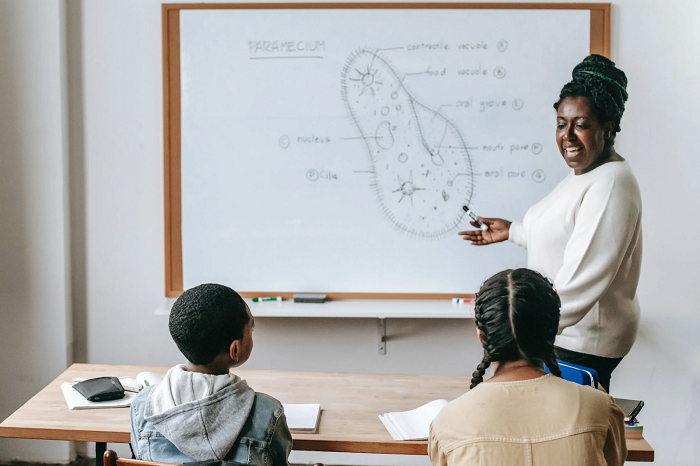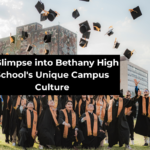Imagine a world where young minds are nurtured and encouraged to flourish, where each child’s unique abilities are celebrated, and their potential knows no bounds. This world exists within gifted education, where exceptional learners, encompassing a diverse range of talents, gifts, learning differences, and neurodiverse traits, are provided with the tools they need to soar.
As parents and educators, we need to recognize and nurture these exceptional learners, providing them with the support and opportunities they need to thrive. In this article, we will delve into the world of gifted education, exploring its importance, strategies for identifying giftedness, and ways to meet the needs of these extraordinary young minds.
Unearthing the Gifted: Identifying Exceptional Learners

Within every home and classroom, a kaleidoscope of gifts awaits discovery. Exceptional learners may demonstrate remarkable cognitive abilities, captivating creativity, and a drive to explore subjects that fascinate them.
Moreover, this diverse group includes children with learning differences such as dyslexia, dysgraphia, and dyscalculia, as well as those with neurodiverse traits like ADHD and autism. Some children even possess two or more extraordinary traits, making them twice exceptional.
Éxceptional learners are like rare gems, each possessing a brilliance that sets them apart from their peers. However, this brilliance has a tendency to go unrecognized in traditional classroom environments.
Some children excel academically, easily solving and completing problems, while others may express their gifts through creativity, writing, or artistic endeavors. Yet, some may struggle in traditional learning environments which mask their brilliance behind learning differences that impede their success.
Embracing the Spectrum: The Importance of Gifted Education

In a world that celebrates diversity, we must recognize that exceptional and twice-exceptional learners have distinct educational needs. Gifted education is not about labeling or segregating children; it’s about acknowledging their unique strengths and challenges in learning. As parents and teachers, we must innovate creative pedagogical solutions to meet the needs of these exceptional minds.
Gifted education is a multifaceted concept that extends beyond academic enrichment. It’s about creating an inclusive and supportive learning environment that fosters intellectual, emotional, and social growth for exceptional learners. Enhance your career in gifted education by pursuing professional development opportunities and building relationships with other gifted education professionals. By embracing this spectrum of brilliance, we celebrate the diversity of talents that enrich our classrooms and communities.
Spotting the Brilliance: Identifying Exceptional Learners
The journey of nurturing brilliance begins with keen observation and understanding. Identifying exceptional learners requires a holistic approach, considering medical testing, academic history, and social-economic characteristics. As parents and educators, we must keep an eye out for the following telltale signs
- Outstanding Intellectual Abilities: Exceptional learners often demonstrate accelerated learning, grasping complex concepts with ease and displaying above-average problem-solving skills in one or more subjects.
- Passion for Learning: These children display an insatiable curiosity and eagerness to explore matters deeply, sometimes developing hyperfixations, and can have a single-minded focus on one topic or subject.
- Creative Expression: Gifted learners may exhibit exceptional creativity in art, writing, or innovative problem-solving approaches.
- Diverse Learning Styles: Exceptional learners have diverse learning styles which can conflict with traditional classroom models, causing learners to become a disturbance in class, or be perceived as uninterested in the subject.
It’s best to take a child for medical testing if you notice these signs to ensure you understand the scope of their exceptionality and create the right learning environment to nurture their learning.

Meeting the Multifacted Needs: Strategies for Exceptional Learners
Embracing a flexible and dynamic approach to education is key to ensuring that exceptional learners thrive. Below are our top strategies to support their growth
Differentiation
This approach acknowledges and supports students possessing varying learning paces, styles, and preferences. Educators support their students by adapting teaching methods to suit individual needs, allowing students to delve deeper into subjects that ignite their passions while receiving extra support in challenging areas.
Employing differentiated instruction in the classroom and when helping with homework fosters the child’s enjoyment of learning and lays the foundation for them to become autonomous learners.
Enrichment Programs
Providing enrichment opportunities outside the standard curriculum can spark the imagination and curiosity of gifted learners. Enrichment programs include dedicated art classes, math and science symposiums, sports, music classes, language immersion programs, and more.
Read: How to Teach Literacy in Kindergarten
Taking the time to nurture interests that would otherwise be ignored in the standard curriculum allows exceptional and twice-exceptional learners to discover gifts and talents that might otherwise go unnoticed. It provides them with motivation, joy, and invaluable skills they can use throughout life.
Individualized Education Plans (IEPs)
One of the most effective ways to meet the needs of exceptional learners is through Individualized Education Plans (IEPs). An IEP is a personalized roadmap for each student, outlining their specific learning goals, required support services, and necessary accommodations.
For exceptional learners with learning differences or neurodiverse traits, IEPs can offer tailored support to address their specific challenges. Educators, parents, and specialists should collaborate to create an IEP that ensures every aspect of the student’s academic journey is tailored to their strengths and challenges.
Multiple Forms of Assessment
Traditional standardized testing may not accurately reflect the abilities and potential of exceptional learners. Instead, educators should embrace diverse assessment methods, such as project-based assessments, presentations, portfolios, and performance evaluations.
This multifaceted approach allows students to showcase their skills and knowledge in ways that align with their strengths. Instead of discouraging a student with bad grades and making them feel like a failure, multiple forms of assessment allow exceptional students to learn their own strengths and harness them to academically prosper.
Mentorship and Peer Groups
Exceptional and twice-exceptional learners experience asynchronous growth, meaning they’ll grow in leaps and bounds in their gifted areas but progress slowly in their challenging subjects. This can be disheartening and stressful, especially if they feel alone. That’s why parents and educators should surround them with mentors. Mentors challenge and encourage exceptional learners to grow in new ways, offering fresh perspectives and learning methods while being a guiding light for the path ahead.
Additionally, exceptional learners can struggle with feeling alone in their extraordinary skills, especially in traditional learning institutions. Ensuring them to connect with like-minded peers allows them to avoid isolation, showing them that although they’re exceptional, they are not alone. They can share ideas and encourage one another to grow without feeling like the odd one out.
A Holistic Approach: Embracing Social and Emotional Well-being

Beyond academic enrichment, we must nurture exceptional learners’ social and emotional well-being. Educators and parents can help students flourish and form meaningful connections with others by providing a supportive and inclusive environment.
Building a Supportive Community
Everyone wants to feel connected and understood, and exceptional learners are no different. Asynchronous development and giftedness can make exceptional learners feel alone. Depending on when in their academic journey they receive recognition for their exceptionality, they may be several grades above (or below) their projected grade-level. Encouraging collaboration and peer interaction helps them connect with like-minded peers and reduce feelings of isolation.
Emotional Intelligence
Equipping these brilliant young minds with emotional intelligence tools helps them navigate challenges and build resilience. Online Notepad is a valuable emotional intelligence tool for tracking your thoughts, feelings, and behaviors over time. Additionally, exceptional learners that struggle to read emotional cues will benefit from classes where they can learn to emotionally connect with others and feel like a part of a community.
Advocacy and Understanding
Exceptional learners develop differently from their peers. They may excel at math but struggle with social cues. Alternatively, they may struggle academically but can easily create stunning mosaic art in a few days. Learning Experience At Home for Exceptional Learners should be tailored to their individual needs and interests. Understanding these differences and allowing space for growth is crucial to creating a safe social environment for exceptional learners to thrive.
Nurturing Brilliance, Fostering Change

Recognizing and nurturing brilliance in all its forms is a shared responsibility, and it holds the promise of shaping a brighter future for our children and society. By innovating creative pedagogical solutions and fostering an inclusive learning environment, we can unlock the full potential of exceptional learners and inspire them to become the architects of change, pioneers of progress, and creators of a better tomorrow.




